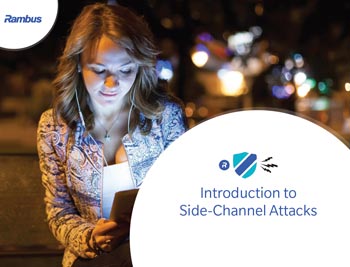Home > Security IP > Crypto Accelerator Cores > HDCP-IP-114
Security
HDCP-IP-114 HDCP 1.x & HDCP 2.x transform engine
The HDCP-IP-114 (EIP-114) is IP for accelerating the high-speed cipher operation specified by HDCP 1.x and 2. Designed for fast integration, low gate count and full transforms, the HDCP-IP-114 transform engine provides a reliable and cost-effective embedded IP solution that is easy to integrate into high-speed processing pipelines.
HDCP content protection data path
Up to 20 Gbps HDCP 1.4 & 2.2
Targets HDMI, MHL, HDBaseT or DisplayPort devices
How the HDCP-IP-114 works
The HDCP-IP-114 HDCPv1.4 & v2.2 content protection datapath engine is a cryptographic accelerator designed to encrypt HDMI, HDBaseT, MHL or DisplayPort video/audio data streams. In addition, the HDCP-IP-114 can offload part of the CPU intensive authentication operations of HDCP1.
The cipher module of the HDCP-IP-114 is suited for HDCP1 and HDCP2 data lane encryption and can achieve throughputs up to 17 Gbps at 540 MHz for DisplayPort or 14.4 Gbps at 600 MHz for HDMI, supporting SD, HD and UHD video streams (up to 4096x2160p60).
Depending on the chosen configuration, the HDCP-IP-114 targets either HDMI, MHL, HDBaseT or DisplayPort devices. For DisplayPort it includes all functionality to replace and adjust the data lane control symbols related to the encryption (DPES). Three DisplayPort configurations are available, supporting 1, 2 or 4 data lanes.
For HDMI it includes generation and detection of encryption status signaling (OESS and EESS).
The HDCP-IP-114 is part of the Rambus HDCP product offering (formerly of Inside Secure) which consists of data lane encryption modules, full HDCP security modules and HDCP software components. Multiple HDCP-IP-114 instances can be controlled by one instance of the VaultIP root of trust security core loaded with HDCP software.

Introduction to Side-Channel Attacks
Side-channel attacks conducted against electronic gear are relatively simple and inexpensive to execute. Such attacks include simple power analysis (SPA) and Differential Power Analysis (DPA). As all physical electronic systems routinely leak information, effective side-channel countermeasures should be implemented at the design stage to ensure protection of sensitive keys and data.
HDCP-IP-114 Information
Key benefits:
- Silicon-proven implementation
- Fast and easy to integrate into SoCs
- Flexible layered design
- Complete range of configurations
- World-class technical support
- Separate HDCP SW stack available
Supported content interfaces:
- HDMI 1.4 & 2.0
- DisplayPort 1.2 & 1.3
- MHL 1.4, 2.2 & 3.2
- HDBaseT 2.0
HDCP1 crypto algorithm
- RNG function (hdcpRngFunction) with seeding
- Authentication HDCP1 cipher operation
- Data lane encryption for 1, 2 or 4 DisplayPort lanes, achieving 5.4Gbps of link rate per lane
- HDMI data path encryption for speeds up to 14.4Gbps at 600MHz
- Generation of HDCP1 enhanced link verification information for HDMI
HDCP2 crypto algorithm
- AES with a key length of 128 bits
- Offloading of AES operations required during AKE
- Data lane encryption for 1, 2 or 4 DisplayPort lanes, achieving 5.4Gbps of link rate per lane
- HDMI data path encryption for speeds up to 14.4Gbps at 600MHz
Secure access of confidential material
- Hardware protected access via the Host bus interface using protection bits
Interfaces
- The EIP-114 has a single 32-bit host APB interface that has its own interface clock signal. It can operate fully asynchronous from the module clock. The host interface directly connects to a EIP-116 HDCP control module, but it can also connect to an external host CPU that runs the HDCP SW stack.
DisplayPort or HDMI data path
- DisplayPort: 32-bit wide data bus per DisplayPort data lane
- HDMI: shared 24-bit data lane for HDMI Video and Auxiliary data; backwards compatible with DVI
- HD-Base-T: combined with HDMI / MHL



